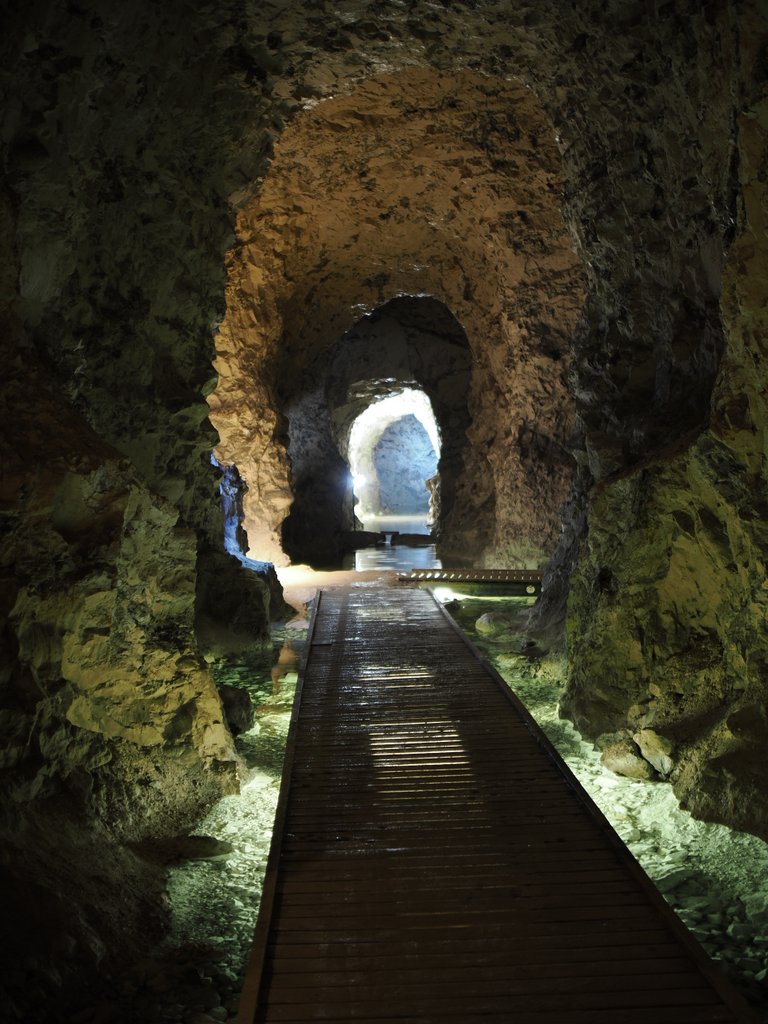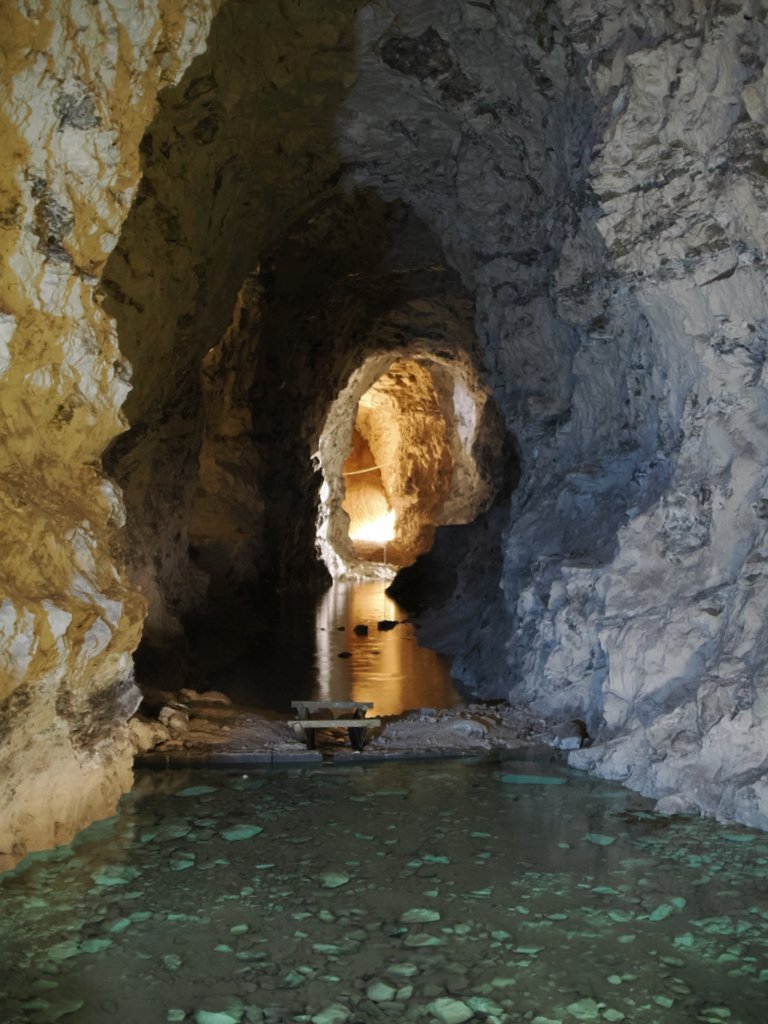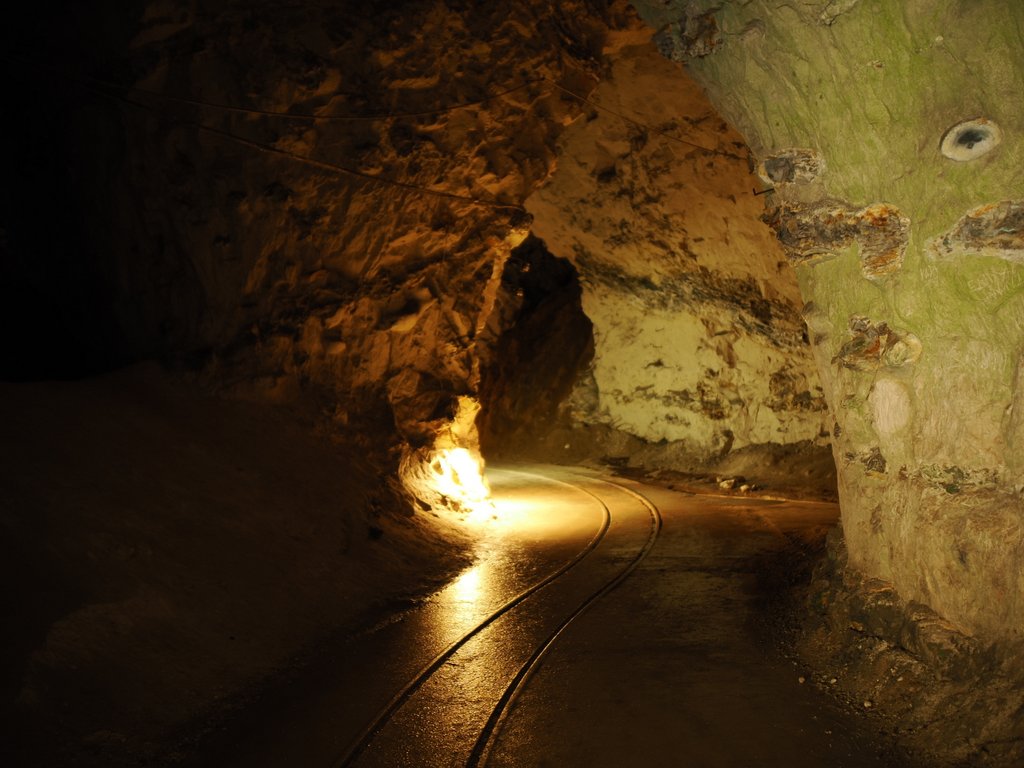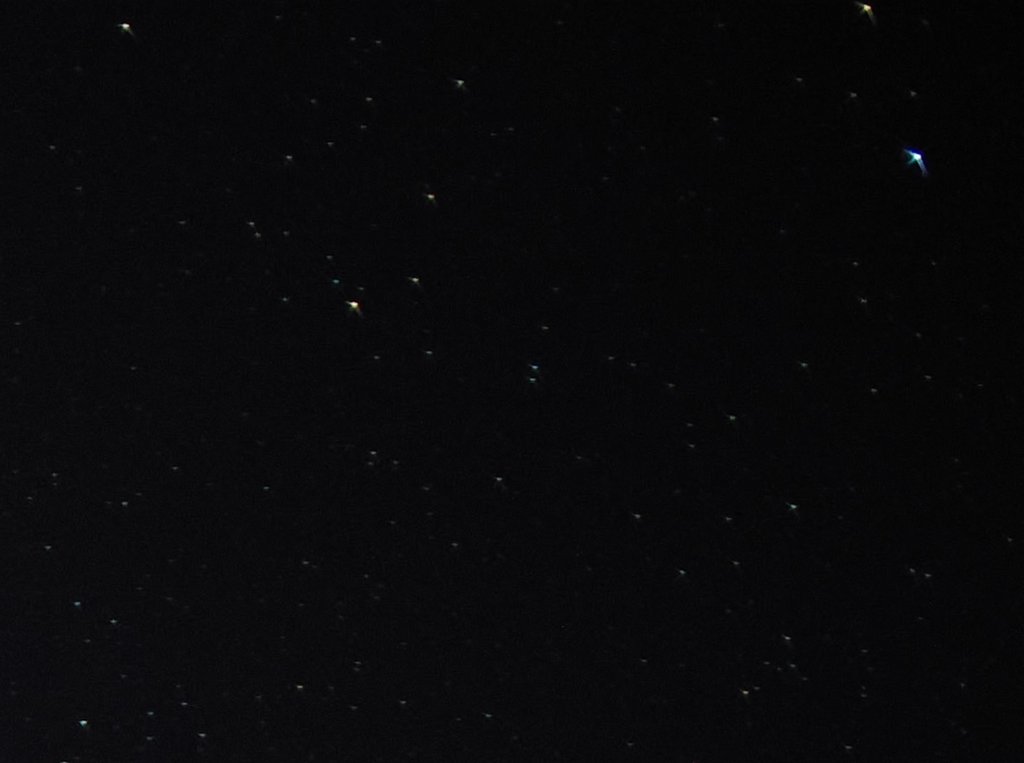
I’ve had the Laowa 18mm f/0.95 sitting around for some time, on loan from a reader. Somehow I haven’t had the opportunity to use the lens. Because simply snapping a few test charts – that’s not what it’s for. Now I was in the Monsted limestone pit, a very large artificial cave labyrinth with sparse lighting – perfect for the 18mm Laowa. The caves are long enough for the angle of view to be sufficient and the lighting is lousy enough to make the 0.95 worthwhile.

In the tests so far, the edge sharpness is more so-so, but the corners are darker. This still needs to be tested under controlled conditions. In the cave, however, it doesn’t really matter. (In the photo above, the vignetting is not noticeable because I cropped it and the corners are over the water).
The lens has no electrical connections, so be sure to set the correct focal length in the camera-IBIS.

Here is set to the right wall (in the full resolution you can see all the scratch graffiti.) What you can see well here: f/0.95 is a tight shirt even at 18mm and FT. The wall on the right is sharp, the rest is not. 1/4s at ISO200. Freehand of course, why do you have a stabiliser?
The limestone cave is huge, not everything is illuminated and you should take a map with you. You can walk around there without supervision and take photos to your heart’s content. In the low season and during the week there is relatively little going on, so you can take your time. Certain areas are closed because of bats, but the rest is big enough.
Of course you think, 18mm and f/0.95 – astro? Rather not.

This is the top right corner. Bright stars get very strange flares. They are all directed towards the centre of the image. If you think that’s cool….
Of course, all the image errors disappear if you stop down properly, but that’s not the point of a fast lens.
Hallo Reinhard da ist ein Typo drin. Du willst wegen der fehlenden Kontakte. Nicht die Brennweite sondern die Blende und den Fokus sorgfältig einstellen oder?
Kein Typo. Für die korrekte Funktion des Stabis muss man die Brennweite einstellen.
Für Astro ist um die 17mm eine Lücke bei mir, aber wünschte ich mir auch nur selten.
Bei den Sternen sieht man halt jeden Fehler der Optik und auch Dezentrierungen und Sensorshifts.
Aber seit Dezember 2023 kann
Für Astro ist bei mir eine Lücke zwischen 12 und 25mm, aber gewünscht hab ich mir auch nur selten eine Brennweite von etwas mehr als 25mm. Für die ausgedehnten Staubwolken im Sternbild Stier wäre es aber wohl ideal.
Bei den Sternen sieht man halt jeden Fehler der Optik und auch Dezentrierungen und Sensorshift.
Aber seit Dezember 2023 kann man das mit einem einfach Klick weitestgehend korrigieren:
Hier mal ein Screenshot:
https://www.austrianaviationart.org/rw/RW_P329421_bXt.png
Oben rechts Original, unten mit BlurXterminator und weil’s mich interessierte mal ein zweites mal, was nichts bringt und man es auch nicht macht.
Davor war es recht mühsam solche verlaufenden Fehler zu korrigieren: Man musste für jeden Bereich eine Maske machen und die passende PSF für die Deconvolution rechnen lassen.
Da das Stunden an Arbeit kostet, hatte ich dann meist die Ränder weggeschnitten ;-).
Mit bXt (ein kostenpflichtigs Tool für PixInsight) heute ein Klick und 20s – ein paar Minuten Wartezeit (je nach Grafikkarte).
Liebe Grüße
Siegfried
Siegfried